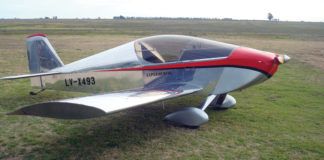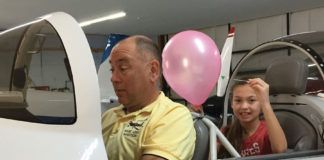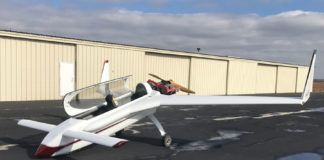For the past few months, Wind Tunnel has been discussing good engineering practice and its application to homebuilts. We now turn our attention to a related subject—technical advice.
At the risk of being recursive, we herein offer advice about advice.
Choose Wisely, Listen Carefully
When I was growing up, my father would often tell me, “There is no virtue in reinventing the wheel.” He was teaching me that I should use the large body of knowledge already in existence, rather than proceeding from a state of ignorance and trying to figure out things that are already known.
For a project as extensive as building an airplane, good advice can be extremely valuable. Taking advantage of the expertise and experience of people who have been there before can save countless hours of experimentation and frustration. Every pilot has a story that starts “if only he had listened to (me)…that would not have happened.” We all marvel at the folly of those who proceed in blissful ignorance to a catastrophe that those more knowledgeable can see coming long before it happens.
There is, however, a dark side to advice, particularly in the world of homebuilt airplanes. Advice is only valuable if it is correct. If the giver of the advice is ignorant or wrong, then their advice is at best useless, and at worst dangerous—no matter how well-intentioned the advisor is.
Well-meaning givers of advice seem to appear from everywhere once a project becomes known. Many of these people sound authoritative, and appear to know what they are doing. Unfortunately, some do and some don’t.
A Tale of Two Engines
Some years ago, a friend of mine had an experience which teaches an important lesson. He was doing ground runs of the turbocharged 2100-cc Revmaster VW engine in his recently completed KR-2 prior to first flight.
Several people on the airport who fly HAPI-powered Dragonflies offered my friend advice on the ground running of his engine. Unfortunately, neither the givers of the advice nor my friend realized that the two engines in question (the Revmaster turbo and the HAPI) were different—even though they were both VW-based. In particular, the Dragonfly pilots stated that the engine should be able to turn a given RPM during static ground running in order to develop enough power for a safe takeoff. My friend tried to run his turbocharged engine, pushing a fixed-pitch propeller, at this RPM on the ground, and promptly overheated it. Luckily, he saw the oil and cylinder head temperatures climbing, and had the sense to shut down the engine before he did any real damage.
What happened? Why did one VW-based engine overheat at an RPM where another did not? The answer in this case lies in the turbocharger. A normally-aspirated engine is RPM governed by its propeller and the throttle setting. If the prop limits the rpm to too low a value, the power is also limited and the engine, while it may not develop much power, will also not run too hot.
On a turbocharged engine however, opening the throttle not only opens the throttle valve, it can increase the boost coming from the turbocharger. The power of the engine is not strictly limited by rpm, since increasing boost will increase power at constant RPM. When my friend ran up his engine, he inadvertently over-boosted it trying to force it up to the RPM recommended by the advice-givers. A highly-boosted engine generates more horsepower, and hence more waste heat, than a normally-aspirated engine of the same displacement. The engine in the KR-2 overheated when it could not reject enough heat.
After the incident, we consulted the manual for my friend’s engine, and found that the RPM at which the engine had overheated was 300 RPM higher than the maximum static RPM recommended by the manufacturer. My friend was lucky. He did not damage his engine, and the consequences of the bad advice he took happened on the ground, where he could shut the airplane down and get out.
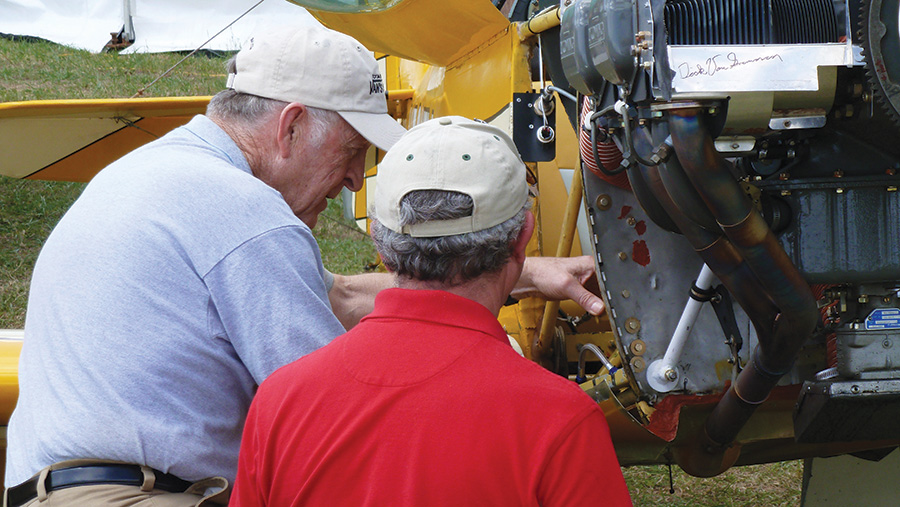
Quiet advice from the designer of the aircraft (in this case, Richard VanGrunsven explains a detail on his RV-1) is more valuable than gold.
Listen or Ignore?
My friend’s experience illustrates a very important aspect of advice: Taking bad advice can be every bit as dangerous and damaging as ignoring good advice.
The critical question is how to tell useful/correct advice from dangerous/bad advice. A few suggestions follow:
I. Try to know enough about the subject yourself to tell when something isn’t right.
Most subjects about airplane design and operation have been covered in written literature. Spend the time to read up on things. This can be a laborious and difficult process, but it is well worth the time spent. It is less work to accept the advice of a supposedly knowledgeable person than it is to dig the information out of written material. My friend with the KR-2 got caught this way. He didn’t consult his engine owner’s manual in detail until after the overheating trouble.
Printed material, particularly the manufacturer’s specifications and operating manuals, are very useful. If someone advises you to ignore the manual, or to exceed the limits specified in the manual, there are two things you should do: First, don’t violate the manufacturer’s limits on his product without consulting the manufacturer, and second, do not trust the opinion of the person who advised you to violate those limits.
Often, these people have successfully gotten away with violating the published limits on their own airplanes. The reason they sometimes get away with it is because most airplanes and airplane components have large safety margins built into them. Those safety margins are there to keep you safely away from a failure. Deliberately violating the published limits reduces the safety margin by an unknown amount, and can easily lead to a catastrophic failure.
Many components give no warning that they are nearing their actual limits. They may not creak, groan, vibrate, or complain while stressed to 99.9% of their ultimate capacity. Load them just a tiny bit more and snap! The fact that there is no sensation of impending doom before a failure can lure the unwary into pushing things a little harder each time. Since nothing scary happened last time, they assume there must be some margin left. This kind of thinking is dangerous and will lead to disaster. The safety margins built into the airplane and its components are there precisely because there is no warning of impending failure, and the operating limitations are set to keep the stress on them well below the failure point so that small, accidental excursions above the stated limits will not cause failure.
If you have a choice between the written (or verbal) advice of the manufacturer and the advice of someone else, believe the manufacturer. There is one exception to this. If you find, by talking to several people who have experience with one particular product, that the product does not meet the manufacturer’s specifications, it is well worth investigating further before proceeding.
II. Know the qualifications of the person giving you the advice.
Just because a person sounds confident and authoritative does not mean that he really knows what he is talking about. Ask questions about the sources of his information, and his general qualifications to discuss the subject.
If the person is talking about direct experience, make sure that his experience is truly applicable to your problem. The fact that someone’s experience is true does not mean that it is useful to you. My KR-2 friend got in trouble because he assumed that the experience of the well-meaning Dragonfly pilots was applicable to his KR-2. In fact, it was not. Although the Dragonfly owners told my friend the truth about their engines, that advice would have only been valid if my friend’s KR-2 had had the same HAPI engine as the Dragonflies had, instead of the Revmaster which was actually installed.
Another important thing to keep in mind is that a person who is knowledgeable in one area may be ignorant in another. I, for example, am qualified to give good advice about designing an airplane, but, were I foolish enough to give advice about avionics, it would be meaningless. The fact that a person is an engineer does not mean that his specialty applies to the problem at hand. An electrical engineer cannot advise you professionally about aerodynamics any more than an aerodynamicist can advise professionally about electronics. The fields are different, and being expert in one does not mean that a person knows anything about the other.
One very common—and dangerous—source of confusion is the conclusion that a person who is either a good craftsman or a good pilot knows about all aspects of airplane design and engineering, as well as construction. It is understandable to take a beautifully-built airplane as proof that the builder knows what he is doing. It is a correct conclusion that he is a good craftsman, and a good builder. But, particularly if the airplane was built from plans or a kit, the workmanship of the builder says absolutely nothing about his ability as an engineer or designer. Likewise, the fact that a person is a superb pilot, and can make an airplane dance to any tune, does not mean that he knows how to design an airplane—or what makes it work—any more than knowing how to drive a car makes a person a mechanic.
Unfortunately, the group just mentioned (expert pilots/builders) seems to contain a small but vocal minority who think that since they can build well and/or fly well, they know everything about airplanes. This particular type of individual talks a good game, but can give advice about design that is dangerously wrong. In my opinion, they can be the most dangerous of bad advice givers because their great skill in areas where they are expert tends to impress the people they talk to, and gives a false credibility to their bad advice. The following example is from personal experience. Once again, I will not mention names.
Several years ago, a friend asked me to design a wing for a single-seat homebuilt he had under construction. I did so, specifying planform, twist, and recommending an airfoil which gave a good combination of gentle stall and low cruise drag. Unfortunately, my friend also asked the opinion of another person who was an excellent craftsman with many years of shop experience in the aerospace industry, but no formal training and no working experience in aerodynamics.
This person recommended two changes to the design. First, since he didn’t trust “new-fangled” airfoils, he advised the use of a 63-series NACA laminar section. While this is a low-drag airfoil, it has a low CLmax and a very sharp stall. To compound the sin, he recommended that my friend remove the “useless, drag-producing twist” from the wing. Unfortunately, proper twist is essential to safe stall characteristics, and does not actually increase drag significantly.
The wing my friend finally built was the illegitimate offspring of my design and the bad advice he had gotten from his other advisor. The removal of the twist, and the change of airfoil, changed what should have been a well-mannered airplane into one with a nasty stall that had very little warning. While the airplane is fast, it is no faster than it would have been if the design had not been altered, and the stall characteristics have scared its owner often enough that it is only flown occasionally, and then with great care. Luckily, my friend is a good enough pilot that the bad advice he took has not killed him, but he is stuck with an airplane which is no fun to fly, and cannot be easily modified to be safe.
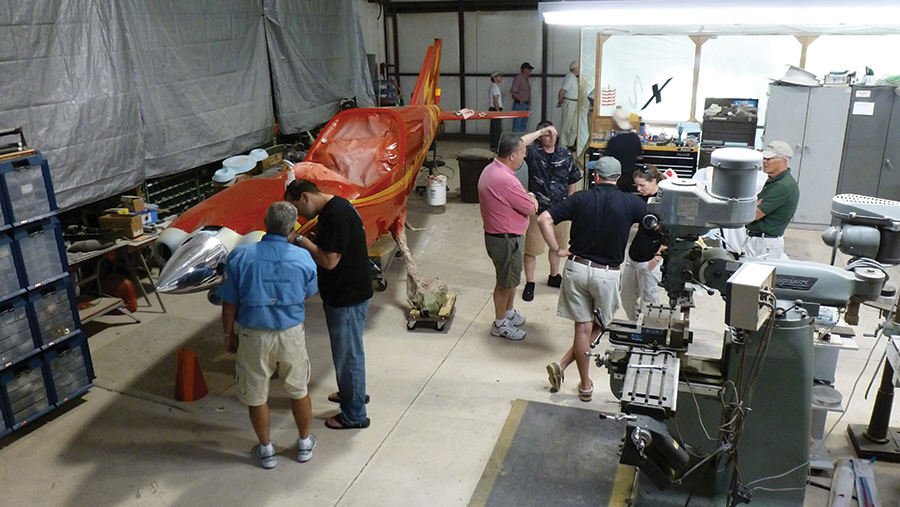
Advice from multiple sources can be weighed against each other. Asking questions in a group setting and hearing multiple ideas is another good idea. Consensus isn’t always right, however, so never feel pressured into accepting it until you have looked it up.
III. Be alert for clues about the credibility of the advice giver.
A person who gives advice freely in one area, but says, “I don’t know” or “I’m not qualified to answer that question” when asked about something else is more likely to be giving you good information. The mere fact that he is willing to acknowledge that there are some things he doesn’t know is a good sign.
Beware of the person who acts like he knows everything, and has a strong opinion about everything—particularly if many of his opinions seem to run counter to standard practice. If the person giving advice starts to tell you why the engineers are all wrong, or bad-mouths technical professionals in general—beware! This type of person is usually self-taught (or self-deluded) and has many half-baked or incorrect ideas, which arise at least in part from a resentment of more technically-expert people.
Another thing to watch out for is how accurate the advice is that you get from someone in an area that you understand. If a person makes incorrect statements about things that you know well, don’t trust his advice in areas you don’t know. The fact that he is willing to make incorrect statements about an area in which he is ignorant destroys the credibility of any advice that person may give. You have no way of telling when he is right and when he is wrong.
IV. Don’t let yourself be pressured.
It is a natural human impulse to want to make the other person feel good, and to not hurt someone’s feelings. This basic niceness can make you reluctant to discount a person’s advice, because you don’t want to make him feel bad. Also, some people can be quite insistent. It is far better to have someone else feel a little miffed because you didn’t take his advice, than for you to have a disaster because you took bad advice.
Trust – but Verify
Advice can be valuable, and a few knowledgeable advisors can greatly improve and ease a project. Just make sure you can tell the knowledgeable ones from those who are well-meaning, but wrong.

![]()
Barnaby Wainfan is a principal aerodynamics engineer for Northrop Grumman’s Advanced Design organization. A private pilot with single engine and glider ratings, Barnaby has been involved in the design of unconventional airplanes including canards, joined wings, flying wings and some too strange to fall into any known category.











